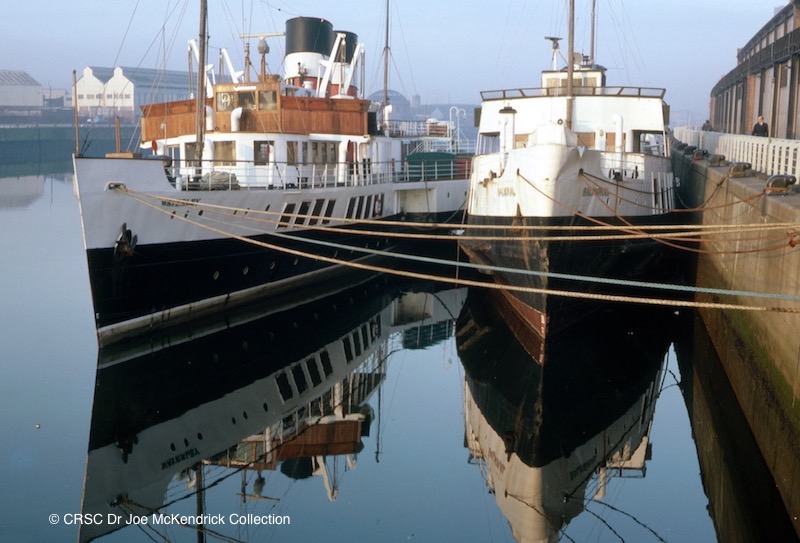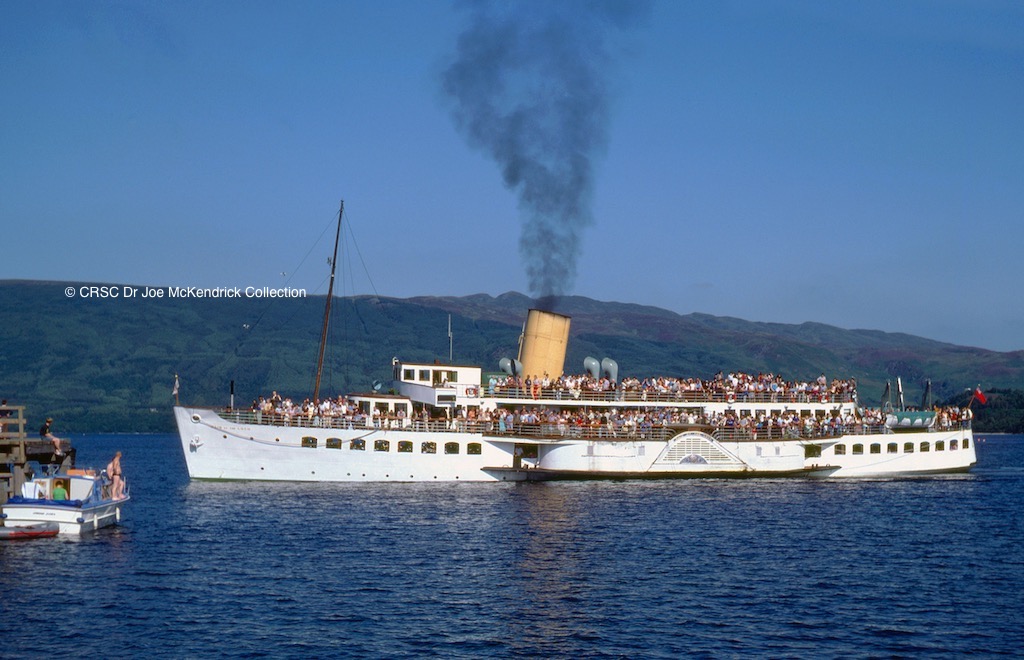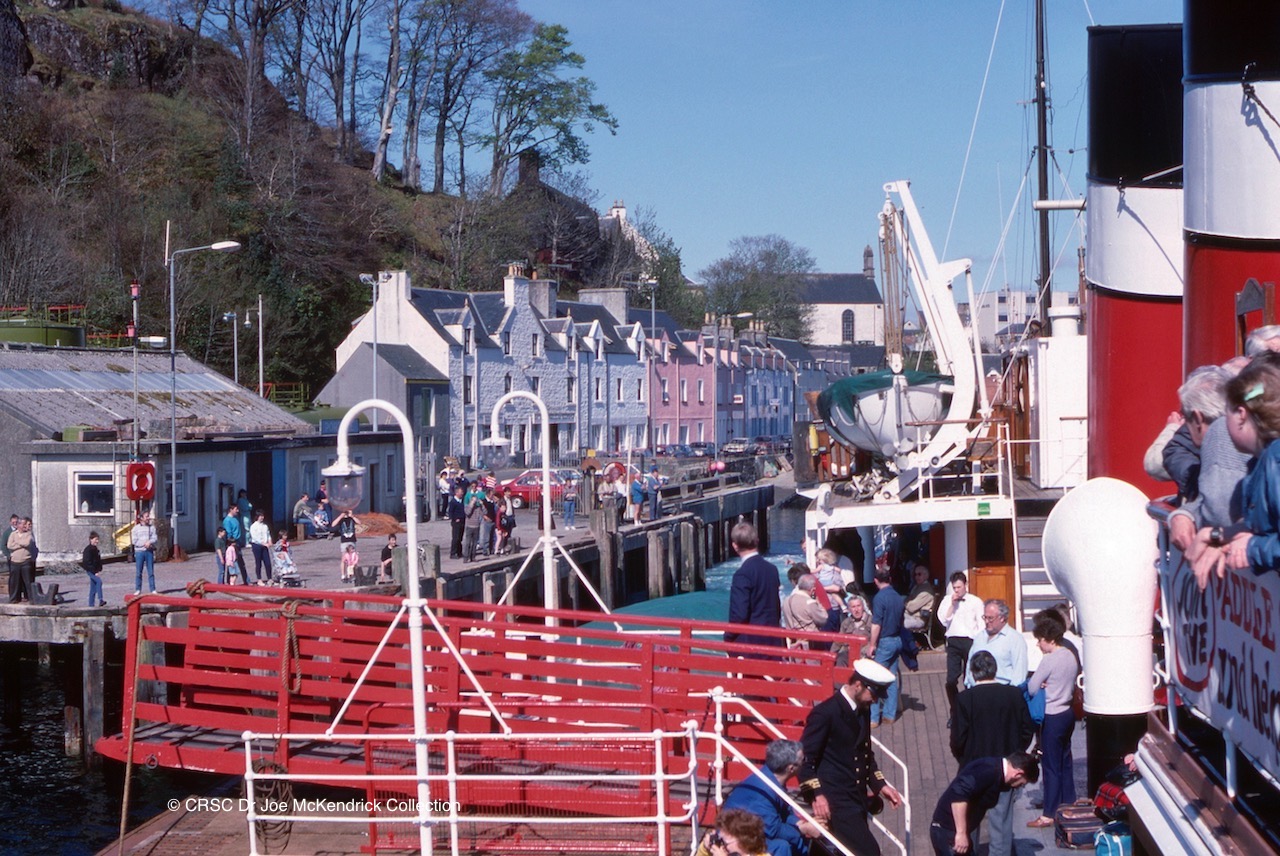
When will be the next time that Waverley heads down the River Clyde from her berth at Glasgow’s Science Centre with a crowd of contented excursionists? Re-boilering could cost £2.5m
Waverley’s operators say that, before they launch an official money-raising drive, they intend to draw up a full cost estimate for re-boilering the ship. As enthusiasts speculate on the paddler’s future, Robert Cleary looks at Waverley’s plight in the context of the wider UK excursion scene, and makes an impassioned plea for everyone to support the appeal ‘until it hurts’.
The recent announcement that Waverley will not be operating this summer, due to the fact that her boilers need to be replaced, has come as a bitter blow to steamer enthusiasts throughout the length and breadth of the United Kingdom. This is particularly so in Glasgow and the west of Scotland, Waverley’s spiritual home and birthplace.
Waverley Excursions Ltd’s decision to cancel the 2019 season has prompted me to reflect on the current position regarding large excursion craft in the UK.
On the face of it, things do not look too bad on the lakes and inland waterways of Britain.

Economical to operate: Teal leaving Bowness on Lake Windermere, a magnet for coach-loads of tourists. Photo by Rob Beale
In particular, the fleet of vessels which ply on Lake Windermere is thriving, and a new large motor vessel, Swift, will enter service in the summer of 2020. New calling points have been added to some of the smaller vessels’ rosters, including appropriately at the Windermere Jetty at the Museum of Boats.
On Ullswater a flotilla of five vessels provides a year round service. Here too a new pier was provided in 2015 for walkers wishing to visit the Aira Force falls. The Ullswater ‘steamers’ include two of the oldest vessels still operational in Britain, Lady of the Lake and Raven, both products of the 19th century firm of T. B. Seath of Rutherglen.
Another survivor from the Victorian era, Sir Walter Scott, operates successfully on Loch Katrine, ably supported by the motor vessel Lady of the Lake.
Lake Windermere, Ullswater and Loch Katrine benefit from being magnets for tourists, hungry for adventure and things to do on their holidays. Coach-based tourists are also an important component of their operations. The ships themselves do not have large passenger certificates, and as they sail on inland waterways they are able to function with comparatively small crew numbers. This and a number of other factors makes them economically viable.
The paddle steamer Kingswear Castle, happily restored to her native River Dart, fits in well with her motor vessel fleet-mates and the steam train under the auspices of the Dartmouth Steam Railway and River Boat Company. Beautifully maintained and overhauled at their all-weather boatyard, the paddler is able to give steamer cruises on the river itself and the Dart estuary. Like the loch/lake cruisers mentioned above, one of the reasons Kingswear Castle remains in service is that she is economic to operate with only a small crew.

Small crew: the little paddle steamer Kingswear Castle successfully plies the River Dart in Devon. Her visitor appeal is augmented by partnership with the Dartmouth Steam Railway, and she is beautifully maintained and overhauled in an all-weather boatyard. Photo by Robin Copland
In contrast with the operators mentioned so far, our three largest excursion steamers — Waverley, Maid of the Loch and Balmoral — need larger crews to satisfy regulations set by the Maritime and Coastguard Agency (MCA), allowing the ships to carry larger passenger numbers.
In the case of Maid of the Loch, it was a serious setback to the charity which owns her when the Heritage Lottery decided against awarding the grant needed to bring her back into service.
Loch Lomond Steamship Company is to be commended for continuing to maintain the steamer and to upgrade her facilities along with the steam winch and slipway at Balloch, so that visitors will continue to come aboard and help keep the revenue flowing to allow her to return to steam in due course.
Balmoral’s owners, White Funnel, are not in a happy position at the moment as they do not have the money to fund the hull repair work which the MCA requires.
While held in affection by many enthusiasts, sadly Balmoral does not have the special cachet and crowd-pulling quality which Waverley enjoys. Waverley is the queen of our excursion steamers. It is very hard to imagine the Clyde scene without her.
Whatever our views on the political situation in the country, whether we are pro or anti Brexit, whether we wish to remain part of the United Kingdom or pursue a dream of being an independent country, whatever our opinions on the state of the infrastructure of our nation, be it on road, rail or sea, whether we care about the controversy over delayed ferry contracts — perhaps we could be united on one serious issue: whether we wish to see Waverley sail into the future.
Waverley is the great survivor. In 1973 it seemed that she had reached the end of the road, but the tremendous vision and hard work of a team of dedicated enthusiasts, led by Douglas McGowan and Terry Sylvester, and aided by the personal intervention of John Whittle at CalMac, saw that she re-entered service in 1975 in private hands, owned by the Paddle Steamer Preservation Society. Since then she has had many setbacks, but she has always bounced back.

The great survivor: surely Waverley can be saved again. Photo taken off Lochranza in 2017 by Eric Schofield
Surely Waverley can be saved again, not just for Scotland but for the many parts of the United Kingdom where she sails and enjoys support. If the Swiss can re-engine, re-boiler and re-build even older paddle steamers, year after year, surely we Scots can do the same.
Do we want to be limited to a Sunday afternoon excursion to Campbeltown by ferry, enjoyable as that is, as the only long-distance trip available to us on the Clyde?
Do we not yearn for the Kyles of Bute, Ailsa Craig, Loch Goil, Tobermory, Loch Sunart, Coll, Tiree, Gairloch and so many other beauty spots, all much better viewed from the decks of a paddle steamer?
If Waverley is to sail again after re-boilering, the time for action is now, as it will take many months and much complex planning to carry out the repairs.
When churches and other charitable organisations seek public support, they say things like ‘Give what you are comfortable with’. In the case of Waverley, our slogan should be ‘Give until it hurts’, as it is clear that a very large sum of money is required to fund new boilers.
Let us all dig deep to support our last Clyde steamer. This might be our last chance to preserve what we care about as enthusiasts.
Pending the launch of an official appeal for funds, Waverley Excursions Ltd have set up two interim sites where supporters can contribute to the Waverley campaign:
Click here to contribute via the Waverley Excursions website, with Gift Aid facility.
Click here to contribute to Waverley’s official JustGiving boiler appeal.

‘While held in affection by many enthusiasts, sadly Balmoral does not have the special cachet and crowd-pulling quality which Waverley enjoys’: the two excursion vessels are pictured at Lancefield Quay, Glasgow, in October 1985

How will the Waverley appeal impact on attempts to get Maid of the Loch back in service on Loch Lomond? The ‘Maid’ is captured on her last day in service, 30 August 1981, at Luss

Waverley at Portree in 1989: her 2019 West Highland sailings were among the first to be cancelled after it became clear her boiler problems were more serious than expected. She will lie at her berth at Glasgow’s Science Centre until a decision is taken on how to proceed with re-boilering

Waverley and Hebridean Isles in the Sound of Mull: for the time being, excursionists must be content with CalMac
Robert Cleary has worked as a seasonal Purser on both Waverley and Maid of the Loch. He is a Past President of CRSC.
Published on 19 May 2019.












